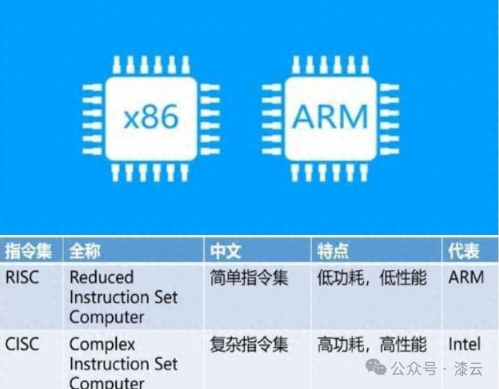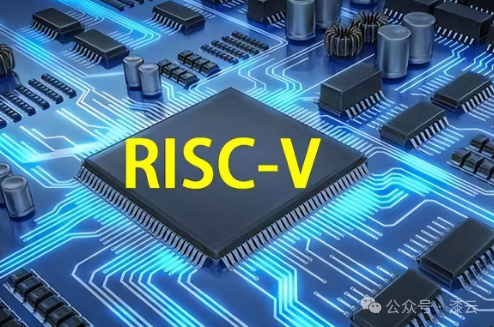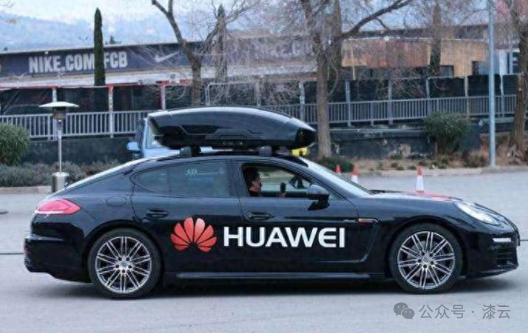The core components of the computers and smartphones we use every day are the chip instruction sets: Intel’s x86 and ARM. The former occupies over 90% of the computer market, while the latter dominates over 95% of the smartphone market. This situation is frustrating, but suddenly, something called RISC-V has emerged, which does not require licensing fees, allows you to see the code, and lets you modify it freely.For Chinese chip companies, this is like seeing the dawn of “liberation”! Finally, there is a way to potentially bypass the blockade of those two giants and create something that we can truly control.In the past two years, many domestic companies have flocked to the RISC-V path, with over 300 alliance members and billions of chips reported in shipments.You need to find a place where the demand is not so “overwhelming”; RISC-V currently has the capability to handle that. At the same time, the dominance of those two “old landlords” is not absolute there; most importantly, the territory must be large enough to allow you to train and survive.The automotive industry, especially our new energy vehicles, is a market that is large enough.
This situation is frustrating, but suddenly, something called RISC-V has emerged, which does not require licensing fees, allows you to see the code, and lets you modify it freely.For Chinese chip companies, this is like seeing the dawn of “liberation”! Finally, there is a way to potentially bypass the blockade of those two giants and create something that we can truly control.In the past two years, many domestic companies have flocked to the RISC-V path, with over 300 alliance members and billions of chips reported in shipments.You need to find a place where the demand is not so “overwhelming”; RISC-V currently has the capability to handle that. At the same time, the dominance of those two “old landlords” is not absolute there; most importantly, the territory must be large enough to allow you to train and survive.The automotive industry, especially our new energy vehicles, is a market that is large enough. Look at the activity: Great Wall has developed the “Zijing M100”, Dongfeng has created the DF30, and Guoxin is also launching new chips… all based on RISC-V automotive-grade chips, and they are either in mass production or preparing for it.Safety is paramount, especially for intelligent connected vehicles, which will become mobile data centers and control centers. If the “brain” of this thing still uses someone else’s architecture, can you feel secure? If they leave a backdoor or implement remote control, you could turn into a “tin coffin” in no time. RISC-V is open-source, allowing for self-control, giving you confidence to “hold the lifeblood in your own hands”.China is now the largest market for new energy vehicles globally! With millions of cars rolling off the production line each year, how many chips will be needed? With such a large domestic market serving as a “testing ground”, even if RISC-V chips have some initial issues, they can quickly iterate in real-world applications, ensuring survival. This is what we call “internal circulation can sustain itself”.Many control chips (MCUs) in vehicles do not pursue the same performance benchmarks as smartphone CPUs; the frequency requirements are not as high. RISC-V’s current technology level is sufficient for these scenarios.The RISC-V architecture is theoretically simpler, with lower power consumption and smaller chip area. For car manufacturers, this translates to real savings. Who wouldn’t want to use cheaper, safer, and more controllable chips?When you consider safety, market potential, technical difficulty, and cost, the automotive sector is tailor-made for RISC-V to “take root and establish a foothold” in China! This is not just a simple technology selection; it is essentially a meticulously planned “D-Day”!Of course, we shouldn’t get too excited and think we can immediately overthrow x86 and ARM.“Automotive-grade certification” is a “hell mode”. High and low temperatures, electromagnetic interference, long lifespan, zero defects… the requirements are extremely stringent. After all, lives are at stake, and this is a tough hurdle to overcome.Then there is the old challenge—ecosystem. Having hardware alone is not enough; software, toolchains, and developer communities must also keep pace.This is the question of whether we can truly “stand up”! If we cannot even master the core architecture in the automotive sector, where we have market advantages and opportunities for breakthroughs, how can we compete in the future? Will we still be led by the nose?
Look at the activity: Great Wall has developed the “Zijing M100”, Dongfeng has created the DF30, and Guoxin is also launching new chips… all based on RISC-V automotive-grade chips, and they are either in mass production or preparing for it.Safety is paramount, especially for intelligent connected vehicles, which will become mobile data centers and control centers. If the “brain” of this thing still uses someone else’s architecture, can you feel secure? If they leave a backdoor or implement remote control, you could turn into a “tin coffin” in no time. RISC-V is open-source, allowing for self-control, giving you confidence to “hold the lifeblood in your own hands”.China is now the largest market for new energy vehicles globally! With millions of cars rolling off the production line each year, how many chips will be needed? With such a large domestic market serving as a “testing ground”, even if RISC-V chips have some initial issues, they can quickly iterate in real-world applications, ensuring survival. This is what we call “internal circulation can sustain itself”.Many control chips (MCUs) in vehicles do not pursue the same performance benchmarks as smartphone CPUs; the frequency requirements are not as high. RISC-V’s current technology level is sufficient for these scenarios.The RISC-V architecture is theoretically simpler, with lower power consumption and smaller chip area. For car manufacturers, this translates to real savings. Who wouldn’t want to use cheaper, safer, and more controllable chips?When you consider safety, market potential, technical difficulty, and cost, the automotive sector is tailor-made for RISC-V to “take root and establish a foothold” in China! This is not just a simple technology selection; it is essentially a meticulously planned “D-Day”!Of course, we shouldn’t get too excited and think we can immediately overthrow x86 and ARM.“Automotive-grade certification” is a “hell mode”. High and low temperatures, electromagnetic interference, long lifespan, zero defects… the requirements are extremely stringent. After all, lives are at stake, and this is a tough hurdle to overcome.Then there is the old challenge—ecosystem. Having hardware alone is not enough; software, toolchains, and developer communities must also keep pace.This is the question of whether we can truly “stand up”! If we cannot even master the core architecture in the automotive sector, where we have market advantages and opportunities for breakthroughs, how can we compete in the future? Will we still be led by the nose? Looking back at history, how many years did it take for x86 to dominate PCs? How many years did ARM take to rule smartphones? Didn’t they all start as underdogs before becoming leaders?Now, the fire ignited by RISC-V in the automotive battlefield may seem small, but this is the beginning of our table-turning moment, the “spark” in our quest for industrial autonomy. First, we need to secure the automotive sector, establish a solid foundation, and only then will we have the opportunity to expand into PCs, smartphones, IoT, and more…What do you think about this?
Looking back at history, how many years did it take for x86 to dominate PCs? How many years did ARM take to rule smartphones? Didn’t they all start as underdogs before becoming leaders?Now, the fire ignited by RISC-V in the automotive battlefield may seem small, but this is the beginning of our table-turning moment, the “spark” in our quest for industrial autonomy. First, we need to secure the automotive sector, establish a solid foundation, and only then will we have the opportunity to expand into PCs, smartphones, IoT, and more…What do you think about this?